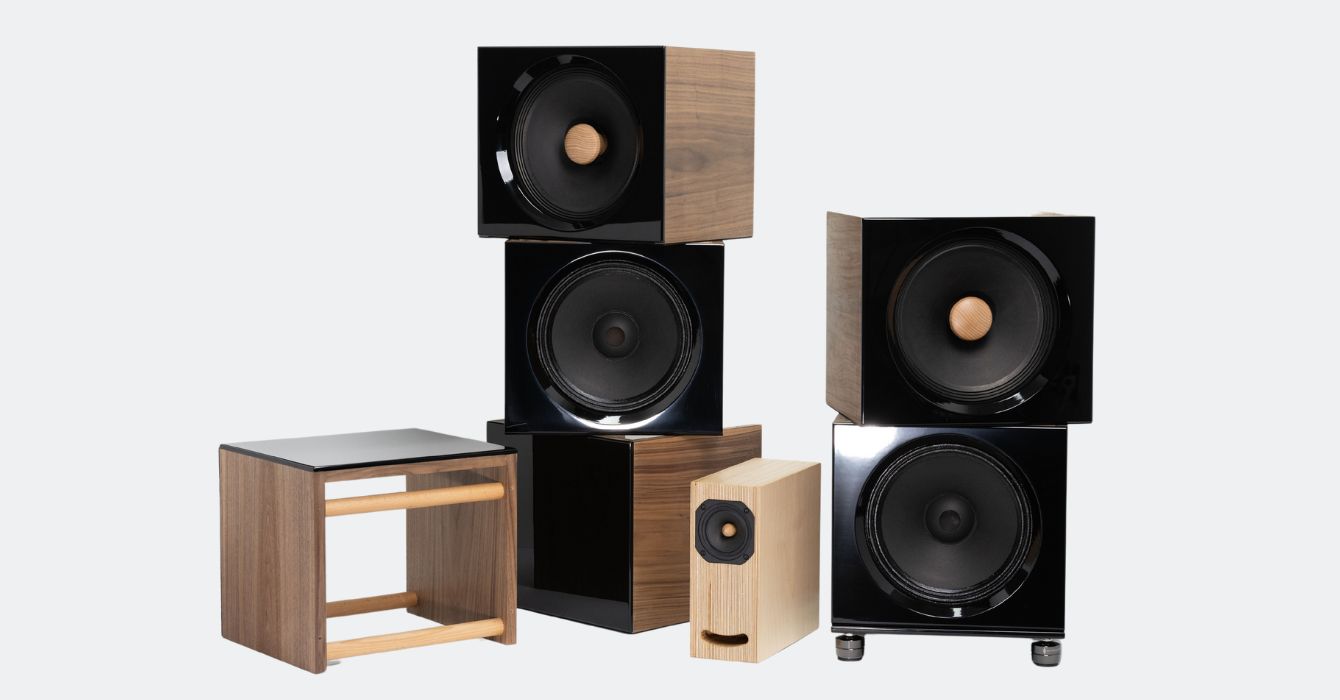Optimal speaker placement is crucial for achieving great, high-quality stereo sound in any room. Each room has unique acoustic characteristics, such as size, shape, materials, and furniture. In this article, we present the basic principles of speaker placement to help you achieve the best sound quality.
Listening Room – How to Improve Room Acoustics?
Proper speaker placement is essential for high-quality stereo sound. However, there is no universal setup for every room. The acoustics of each space are unique, and factors such as shape, size, and ceiling height significantly influence the reproduction of low frequencies. Natural room resonances, determined by room dimensions, can amplify or dampen certain frequencies, affecting bass reproduction. Standing waves between parallel walls can cause sound to either reinforce or cancel itself out in certain areas of the room, making these differences in sound level highly noticeable.
The materials used for walls also play a key role. For instance, brick, wood, or drywall absorb and reflect sound waves differently. Hard surfaces generally improve acoustics, while flexible surfaces, like drywall, may act like membranes, absorbing and diffusing sound energy, which can degrade sound quality. Similarly, floor materials influence sound – harder surfaces tend to be more favorable for clear audio reproduction.
Bass in Small Rooms
Achieving good bass performance in smaller rooms, such as living rooms or larger lounges, can be a challenge. It’s important to consider how to position speakers in these spaces. Effective bass reproduction depends on precise speaker positioning and the room's acoustic control. Good bass isn't just about deep tones – it also involves the right balance and intensity that give music fullness without overemphasizing or muddling the sound. Low-frequency sounds (below 400-500 Hz) radiate spherically, regardless of speaker orientation.
The placement of speakers relative to the room's acoustic resonances is key, as low frequencies are a result of the interaction between direct and reflected sound waves. This means that bass will sound different depending on where you are in the room. While achieving uniform bass across the room with a stereo system isn't possible, thoughtful arrangement can significantly improve sound quality in your preferred listening area.
Where to Place the Speakers?
If you can experiment with the room layout, it’s worth testing different configurations to find the one that best matches your sound preferences. For example, placing speakers along a longer wall, aligned with equal division of the room (e.g., at B4 and F4), with the listening position at the D axis, may improve bass reproduction. Additionally, increasing the distance from side walls can enhance soundstage separation, making higher frequencies better diffused and reflections from walls delayed, creating a sense of acoustic space.
Alternatively, placing speakers on a shorter wall (e.g., at D2 and D6) with the listening seat along axis 4 could narrow the soundstage due to the proximity of side walls. In smaller rooms, experimenting with the "equilateral triangle" listening setup – placing speakers at the intersection of equal divisions – is recommended.
For rooms with overly emphasized bass, you can use an alternative space division into uneven sections (e.g., dividing the space into three or five parts). This can help reduce excessive low-frequency reinforcement and improve tonal balance and overall sound quality.

|
 |
How to Check if the Speakers are Well-Placed?
To achieve optimal speaker placement, use mono recordings. For example, a classic album like Miles Davis' 'Round About Midnight (1956) can help test the effectiveness of your setup. With proper speaker positioning, you should feel the sound of Davis's quintet suspended in front of you.
Next, fine-tune the direction of the speakers toward the listener to accurately reproduce the location of instruments. The ideal listening position – the so-called "sweet spot" – occurs where the sound axes of both speakers cross, delivering sound simultaneously to the listener. Moving away from this point can cause delays in receiving sound from one speaker, weakening the stereo effect.
Start the fine-tuning process by placing speakers perpendicular to the rear wall, then gradually rotate them toward the listener. The results will vary depending on room acoustics, speaker directionality, and personal preferences. For speakers with a wide dispersion range, which emit frequencies evenly over a larger angle, the stereo effect will be enhanced.
Room Acoustics and Interior Design
The interior design, including furniture, rugs, curtains, armchairs, sofas, and bookshelves, significantly impacts room acoustics by altering how sound is reflected and absorbed. These elements primarily influence high frequencies, either reducing reflections in rooms with lots of furniture or increasing them in spaces with minimal decor. Over-dampening the room can reduce the enjoyment of listening, making music sound unnatural and lacking in spatial depth. Conversely, a lack of absorbing materials leads to blurred sound and makes it harder to pinpoint instruments in space.
To optimize acoustics, it’s essential to find a balance between sound absorption and reflection. A rug on the floor is often a recommended solution, as it helps manage reflections without overly dampening the space. For situations requiring additional adjustments, placing sound-absorbing material behind speakers can reduce reflections from the rear wall. It's also advisable to leave side walls mostly untreated in areas where initial reflections occur to maintain natural sound and spaciousness. Lastly, using absorptive materials on the rear wall behind the listening area can reduce sound reflections from the back, improving clarity and instrument localization.
By adjusting the room layout and understanding how furniture and materials affect sound, you can enhance the listening experience and enjoy richer, more immersive music at home.





